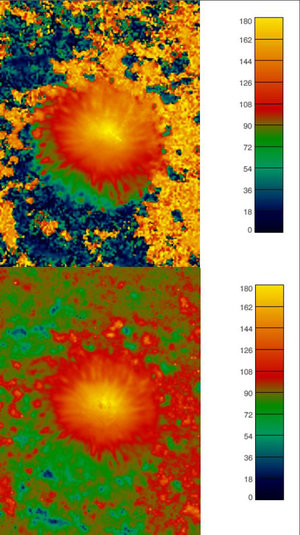At the Sun’s surface, the magnetic field is highly variable from point to point outside sunspots and their surrounding active regions. This is known since 1973 from the observation of two spectral lines of different magnetic sensitivity (Stenflo, 1973). These observations had suggested that in the so-called quiet regions of the solar photosphere the magnetic field is concentrated in vertical strong flux tubes. However, these fine structures are beyond the spatial resolution of present solar observatories.
By combining modeling of such unresolved structures with observations made with the French THEMIS telescope and the American SOT/SP experiment onboard the Japanese satellite HINODE, Véronique Bommier, astronomer at the LESIA laboratory, has confirmed this fine structuring and has precisely characterized it.
By adding statistical methods of spatial correlation, the following parameters have been derived, namely : the average flux tube diameter (30 km), the average distance between two flux tubes (230 km), and the average magnetic field strength in the flux tube (1300 G, which is 0.13 T), in the quietest zones of the solar surface, where the spatially averaged magnetic field is the weakest.

The analysis of the magnetic field inclination has shown the flux tube opening out with height above the surface. Thus, the solar quiet region magnetic field is a loop carpet made of opening and interconnected flux tubes. This is in agreement with the present magnetic field models in such solar quiet regions.

Reference
“Milne-Eddington inversion for unresolved magnetic structures in the quiet Sun photosphere”, by Véronique Bommier, published in Journal of Geophysical Research - Space Science.
This article will be included in the new version of the book “Measurement Techniques in Solar and Space Physics”.
